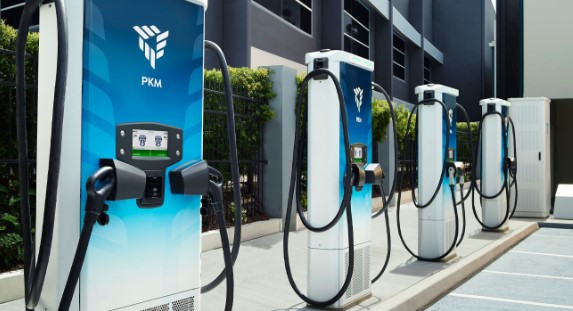Charging Dispenser

A Charging Dispenser is the physical interface through which electric vehicles (EVs) receive electric energy. It includes the connectors, cables, display screens, and user interaction elements that facilitate the actual transfer of electricity from the charging station to the vehicle. Often part of a larger charging system, the dispenser is the most visible and user-facing component of EV charging infrastructure.
Component of charging dispenser
- Connector/Plug: The cable and plug that connect to the vehicle’s inlet (e.g., CCS2, CHAdeMO, Type 2).
- Display Interface: Screens or LED panels to guide users through the charging process.
- Cable Management System: Mechanisms to hold and retract charging cables.
- Authentication Interface: RFID, QR code, or app-based systems to verify users.
- Status Indicators: Lights and messages that show the charging status (e.g., ready, charging, fault).
Types of Charging Dispensers
- AC Dispensers: Usually 3.3–22 kW, commonly used in residential or slow-charging scenarios.
- DC Dispensers: Ranging from 30 kW to 350 kW, used for fast and ultra-fast public charging.
- Dual Gun Dispensers: Equipped with two output cables (e.g., CCS2 + CHAdeMO) to support different EV models.
- Pantograph Dispensers: Overhead charging systems used for electric buses.
- Global and Indian Manufacturers
Global Manufacturers
- ABB (Switzerland)
- Siemens (Germany)
- Delta Electronics (Taiwan)
- Tritium (Australia)
- EVBox (Netherlands)
- Schneider Electric (France)
Indian Manufacturers
- Exicom
- Tata Power EZ Charge
- Servotech Power Systems
- Magenta Power
- Charge+Zone
- Numocity Technologies



